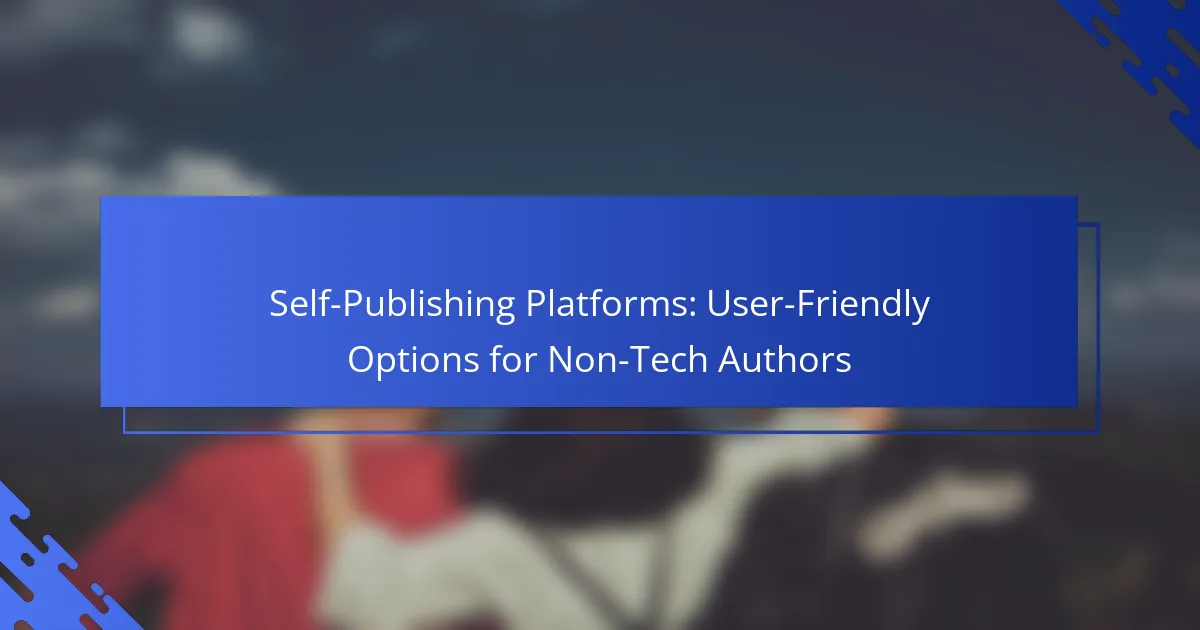For non-tech authors looking to self-publish, choosing a user-friendly platform is essential to simplify the process. These platforms provide intuitive interfaces and clear guidelines, making it easy for anyone to publish their work without needing extensive technical skills. With built-in tools and resources, authors can navigate the publishing landscape with confidence and ease.
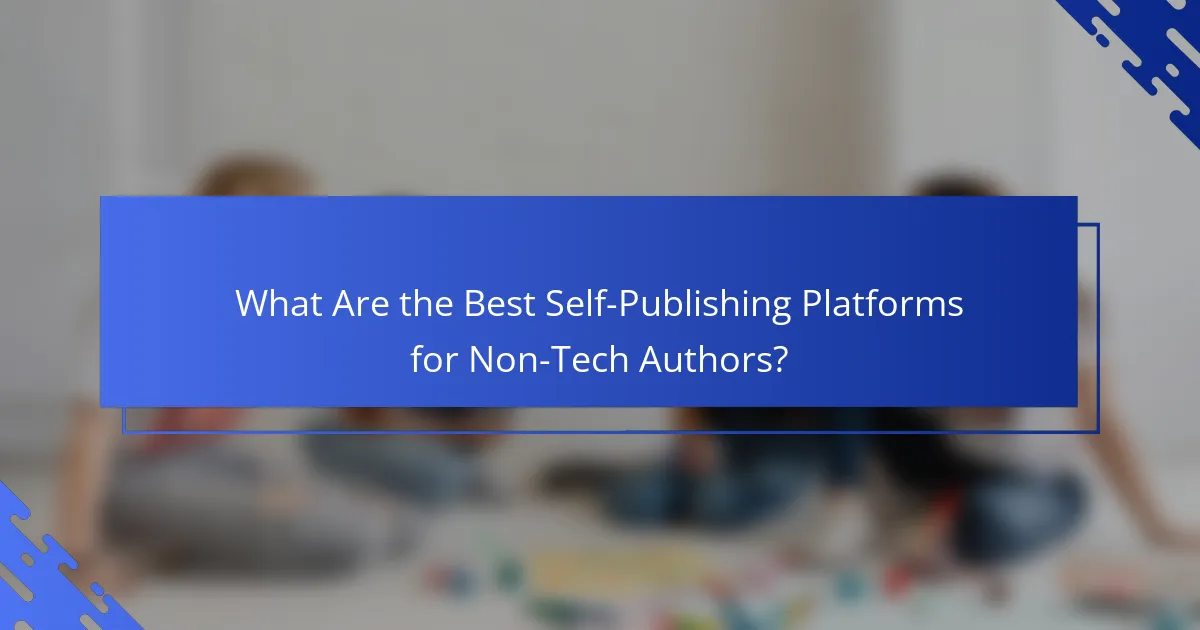
What Are the Best Self-Publishing Platforms for Non-Tech Authors?
The best self-publishing platforms for non-tech authors are user-friendly options that simplify the publishing process without requiring extensive technical skills. These platforms offer intuitive interfaces, clear guidelines, and various tools to help authors publish their work efficiently.
Amazon Kindle Direct Publishing
Amazon Kindle Direct Publishing (KDP) is one of the most popular self-publishing platforms, allowing authors to publish eBooks and paperbacks directly to Amazon. The process is straightforward: authors upload their manuscripts, set their prices, and choose distribution options, making it accessible for those with limited technical knowledge.
KDP offers a royalty rate of up to 70% for eBooks priced between $2.99 and $9.99, providing a lucrative opportunity for authors. However, be aware of Amazon’s guidelines regarding formatting and cover design to avoid delays in publication.
IngramSpark
IngramSpark is a robust platform that caters to authors looking to distribute both print and digital books globally. It provides access to a vast network of bookstores and libraries, which can significantly increase visibility. The platform is user-friendly, but authors should be prepared for a small setup fee for each title.
One key advantage of IngramSpark is its print-on-demand service, which minimizes upfront costs. Authors should ensure their manuscripts meet the platform’s formatting requirements to avoid complications during the publishing process.
Draft2Digital
Draft2Digital is an excellent choice for authors who want to distribute their eBooks to multiple retailers without the hassle of managing each platform individually. This service allows authors to upload their manuscripts once and distribute them to major retailers like Apple Books, Barnes & Noble, and Kobo.
The platform is known for its user-friendly interface and helpful customer support. Authors can also take advantage of free formatting tools and promotional services, making it a great option for those new to self-publishing.
Smashwords
Smashwords is another well-known platform for eBook distribution, focusing on providing authors with a wide reach across various retailers and libraries. It offers a straightforward publishing process, allowing authors to upload their manuscripts and set pricing easily.
Smashwords also provides a comprehensive style guide to help authors format their eBooks correctly. However, authors should be aware that the platform’s royalty rates can vary depending on the retailer, so it’s essential to review the terms before publishing.
Blurb
Blurb is ideal for authors looking to create visually appealing books, such as photo books, art books, or portfolios. The platform offers a range of design tools that enable authors to customize their layouts and create professional-quality publications.
Blurb’s print-on-demand service allows authors to order copies of their books without large upfront costs. While it may not be the best choice for traditional eBook publishing, it excels in producing high-quality print products that can be sold through various channels, including Amazon and Blurb’s own bookstore.
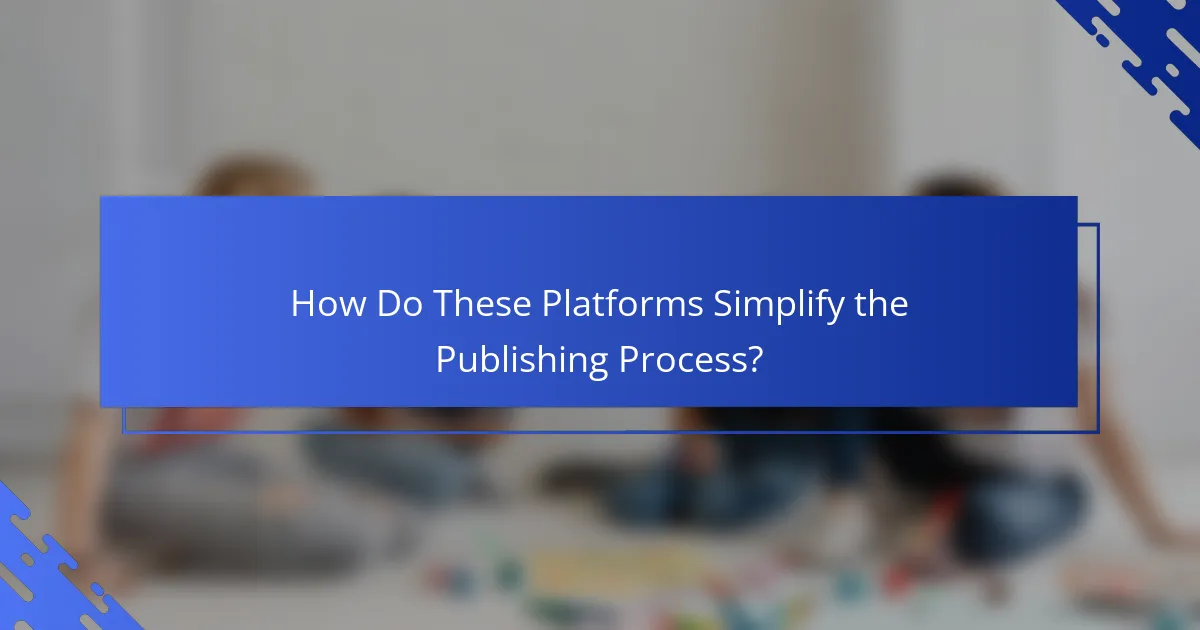
How Do These Platforms Simplify the Publishing Process?
Self-publishing platforms streamline the publishing process by providing user-friendly tools that cater to authors without technical expertise. These platforms offer intuitive interfaces, comprehensive guides, and built-in formatting tools to make publishing accessible for everyone.
User-Friendly Interfaces
User-friendly interfaces are essential for non-tech authors, allowing them to navigate the publishing process with ease. Most platforms feature drag-and-drop functionality, making it simple to upload content, images, and cover designs without needing coding skills.
Popular platforms like Amazon Kindle Direct Publishing (KDP) and Lulu provide clear navigation menus and visual cues, helping authors focus on their writing rather than technical details. This accessibility encourages more writers to share their work with the world.
Step-by-Step Guides
Step-by-step guides are invaluable for authors unfamiliar with the publishing landscape. Many platforms offer detailed tutorials and FAQs that walk users through each stage, from manuscript preparation to final publication.
For instance, KDP provides a comprehensive guide that covers everything from formatting requirements to marketing strategies. These resources help authors avoid common pitfalls and ensure their books meet industry standards.
Formatting Tools
Formatting tools are crucial for ensuring that a manuscript looks professional in its final form. Self-publishing platforms typically include templates and automatic formatting options that simplify the process of preparing a book for publication.
Tools like Reedsy and Scrivener offer pre-designed layouts that comply with various publishing requirements, allowing authors to focus on content rather than design. Additionally, many platforms provide real-time previews, enabling authors to see how their book will appear once published.
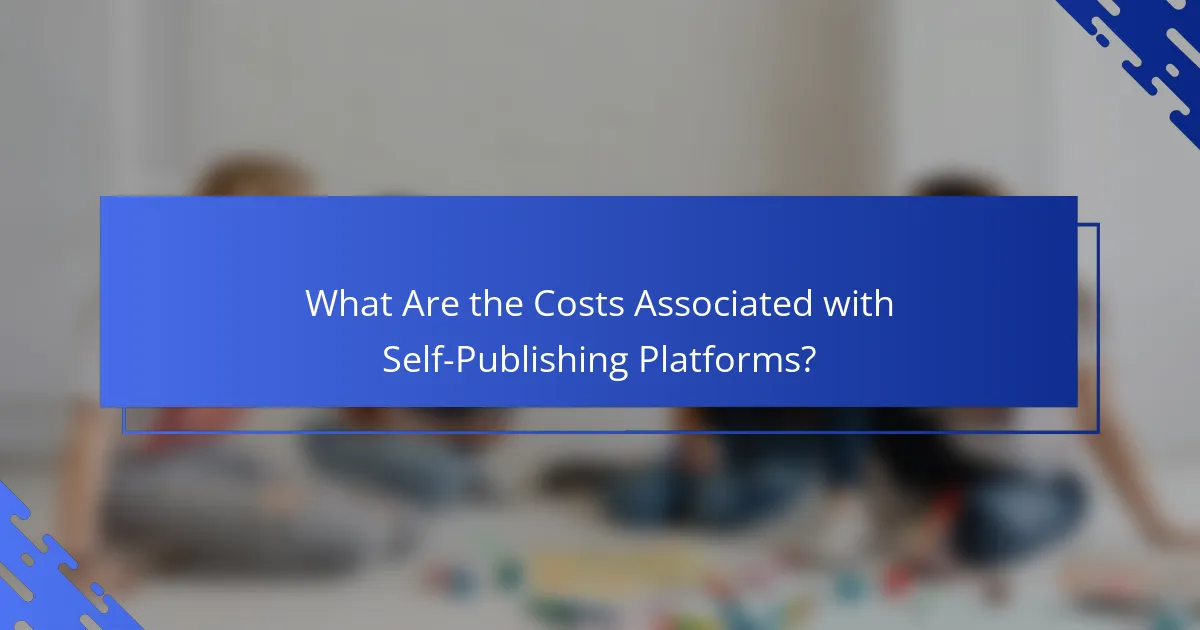
What Are the Costs Associated with Self-Publishing Platforms?
Self-publishing platforms come with various costs that authors need to consider, including setup fees, printing costs, and royalties. Understanding these expenses can help authors choose the best platform for their needs and budget.
Amazon KDP Fees
Amazon Kindle Direct Publishing (KDP) has no upfront costs for publishing eBooks, but it takes a percentage of royalties from sales. Authors can earn 35% or 70% royalties depending on the pricing and distribution choices they make.
For paperback books, KDP deducts printing costs from the sales price before calculating royalties. Printing costs vary based on page count, ink type, and whether the book is in black and white or color.
IngramSpark Setup Costs
IngramSpark charges a setup fee for each title published, typically ranging from $49 to $99, depending on the services selected. This fee covers the distribution of both eBooks and print books to retailers and libraries.
Additionally, authors may incur costs for revisions or updates to their titles, which can add to the overall expense. However, IngramSpark often provides promotional codes that can waive these fees, so it’s worth checking for discounts.
Royalty Structures
Royalty structures vary significantly between platforms. On Amazon KDP, authors can choose between a 35% or 70% royalty rate for eBooks, while IngramSpark typically offers around 45% to 70% depending on the distribution channel.
When setting prices, authors should consider the royalty percentages and how they affect overall earnings. For example, a $10 eBook priced on KDP at the 70% royalty rate would yield about $7 in royalties, while the same book on IngramSpark might earn less depending on the retailer’s cut.
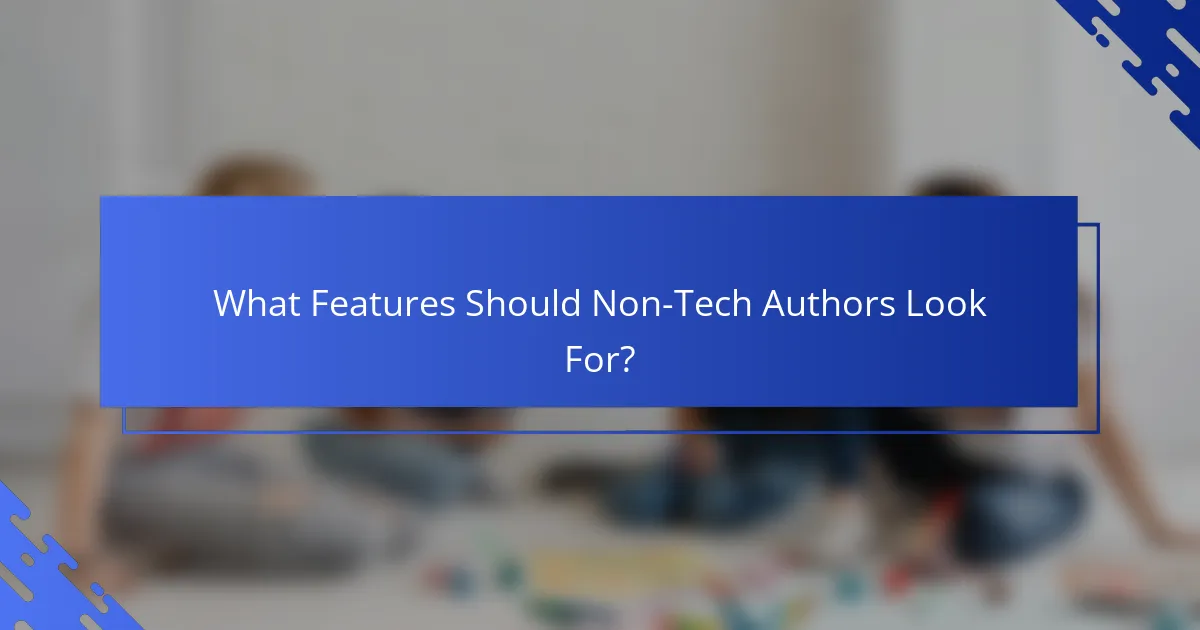
What Features Should Non-Tech Authors Look For?
Non-tech authors should prioritize user-friendly features that simplify the self-publishing process. Key elements include intuitive interfaces, comprehensive distribution options, effective marketing tools, and reliable customer support.
Distribution Options
Distribution options are crucial for reaching a wider audience. Look for platforms that offer both eBook and print-on-demand services, allowing you to publish in multiple formats. Popular choices include Amazon Kindle Direct Publishing, IngramSpark, and Draft2Digital, which can distribute your work to major retailers and libraries.
Consider the royalty structures as well; many platforms offer royalties ranging from 35% to 70% depending on pricing and distribution choices. Ensure the platform you choose aligns with your target audience and sales goals.
Marketing Tools
Effective marketing tools can significantly enhance your book’s visibility. Look for platforms that provide promotional features such as discount codes, email marketing integrations, and social media sharing options. Some platforms, like KDP, offer promotional opportunities like Kindle Countdown Deals.
Additionally, consider platforms that provide analytics to track your sales and audience engagement. Understanding your market can help you refine your marketing strategies and improve your book’s performance over time.
Customer Support
Reliable customer support is essential for non-tech authors who may encounter challenges during the publishing process. Opt for platforms that offer multiple support channels, such as live chat, email, and phone support. Quick response times can make a significant difference when you need assistance.
Check user reviews to gauge the quality of customer support. A platform with a strong reputation for helping authors resolve issues can save you time and frustration, allowing you to focus on your writing.
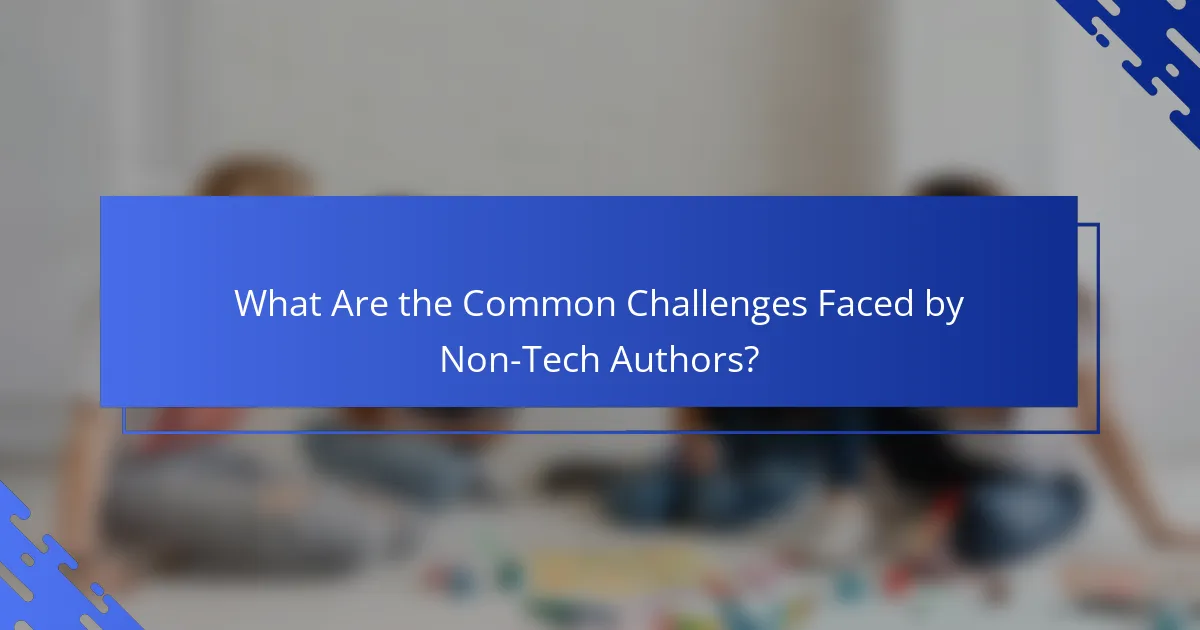
What Are the Common Challenges Faced by Non-Tech Authors?
Non-tech authors often encounter obstacles such as technical formatting issues and a lack of understanding about copyright. These challenges can hinder their ability to successfully self-publish and market their work.
Technical Formatting Issues
Non-tech authors frequently struggle with the technical aspects of formatting their manuscripts for publication. This includes ensuring proper layout, font choices, and file types that meet the requirements of various self-publishing platforms. Many platforms prefer specific formats like EPUB or PDF, which may not be intuitive for those unfamiliar with digital publishing.
To avoid common pitfalls, authors should consider using user-friendly formatting tools or templates provided by self-publishing services. These resources can simplify the process and help maintain a professional appearance. It’s also beneficial to familiarize oneself with the guidelines of the chosen platform, as each may have unique specifications.
Understanding Copyright
Copyright is a crucial aspect for authors, as it protects their original work from unauthorized use. Non-tech authors may find it challenging to navigate copyright laws and understand how to register their work properly. In many countries, copyright is automatically granted upon creation, but registration can provide additional legal benefits.
Authors should educate themselves on the basics of copyright, including how to secure their rights and the implications of sharing their work online. Resources such as the U.S. Copyright Office or similar organizations in other countries can provide valuable information. It’s also wise to consider using Creative Commons licenses if they wish to allow certain uses of their work while retaining ownership.
